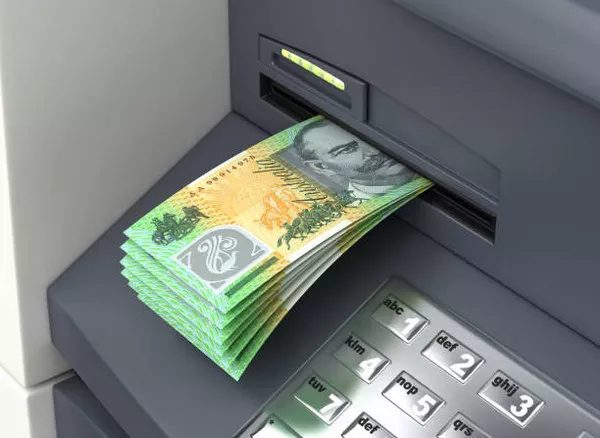The Australian one dollar coin, first introduced in 1984, has since become a staple of the nation’s currency. However, among the millions of these coins minted annually, certain editions have become exceedingly rare and highly coveted by numismatists. The rarest of these is the 2000 $1/10c mule coin, an intriguing anomaly that has captured the fascination of collectors worldwide.
The Birth of the Australian One Dollar Coin
The introduction of the one dollar coin in 1984 marked a significant shift in Australian currency, replacing the paper dollar note that had been in circulation since 1966. The coin features an iconic design by Stuart Devlin, depicting five kangaroos, symbolizing Australia’s rich wildlife and cultural heritage. Over the years, various commemorative editions have been released, each celebrating different aspects of Australian history, culture, and achievements.
The 2000 $1/10c Mule Coin: An Unintentional Rarity
The 2000 $1/10c mule coin is not only the rarest Australian one dollar coin but also a prime example of how a minting error can create an extraordinary piece of numismatic history. A “mule” coin occurs when a coin is struck with mismatched dies – the tools used to imprint the coin’s design. In this case, the mule coin was struck using the obverse (heads) die of a ten-cent piece and the reverse (tails) die of a one-dollar coin.
The error happened during the year 2000 at the Royal Australian Mint in Canberra. Due to a mix-up, a small batch of one dollar coins was struck with the incorrect die combination. The resulting mule coins have a distinctly different appearance from regular one dollar coins. The key difference lies in the obverse side; the mule coin features a slightly smaller and more detailed portrait of Queen Elizabeth II, along with a wider and double rim or “double collar” – a characteristic that is absent on regular one dollar coins.
Discovery and Rarity
The first 2000 $1/10c mule coins were discovered in Perth in 2003, three years after they were minted. Since then, only a few thousand of these coins have been found, making them exceptionally rare. Estimates suggest that fewer than 6,000 mule coins were accidentally minted, and of these, an even smaller number have been identified and authenticated. This scarcity significantly increases their value and desirability among collectors.
Valuation and Market Demand
The value of the 2000 $1/10c mule coin can vary greatly depending on its condition, also known as its grade. Coins in better condition, showing minimal wear and retaining their original luster, can fetch higher prices. As of recent years, a mule coin in uncirculated condition (MS 65 and above) can command prices upwards of AUD 4,000 to AUD 6,000. Even coins in lower grades can still be worth several hundred dollars, far exceeding their face value.
The coin’s rarity and the story behind its creation have made it a highly sought-after item in the numismatic community. Collectors are not only interested in its market value but also in the unique history and characteristics that distinguish it from other coins. The mule coin’s combination of rarity, historical significance, and the fascinating error that led to its creation contributes to its enduring appeal.
Identifying a 2000 $1/10c Mule Coin
For collectors and enthusiasts hoping to find a mule coin, there are several key identifying features to look for. The most noticeable difference is the double rim on the obverse side of the coin. This feature is due to the size difference between the ten-cent die and the one-dollar planchet (the blank piece of metal that becomes the coin). Additionally, the portrait of Queen Elizabeth II on the mule coin is more detailed and appears slightly smaller compared to the regular one dollar coin.
Another distinguishing feature is the alignment of the coin’s designs. On a genuine 2000 $1/10c mule coin, when the coin is flipped from one side to the other, the designs should be correctly aligned, a feature known as coin alignment. Collectors often use magnifying glasses and precise measuring tools to examine these characteristics and authenticate the coins.
The Impact of the Mule Coin on Australian Numismatics
The discovery of the 2000 $1/10c mule coin has had a profound impact on Australian numismatics. It has spurred interest in modern coin collecting and highlighted the potential for valuable finds within everyday currency. The mule coin’s popularity has also led to increased scrutiny of other Australian coins, as collectors search for additional errors or rare variants.
This particular coin has also drawn attention to the processes and intricacies of coin minting. It serves as a reminder of how even a small oversight in the minting process can create a rarity that captivates collectors for generations. The mule coin’s story is a testament to the unpredictability and excitement of numismatics, where each coin can carry a unique story and historical significance.
Conclusion
The 2000 $1/10c mule coin stands out as the rarest and most intriguing Australian one dollar coin, embodying a unique blend of error and rarity. Its accidental creation has made it a prized possession among collectors, representing a fascinating chapter in the history of Australian currency. For numismatists and enthusiasts alike, the mule coin is more than just a piece of currency; it is a remarkable artifact that encapsulates the allure of coin collecting and the enduring quest for hidden treasures within everyday objects.


